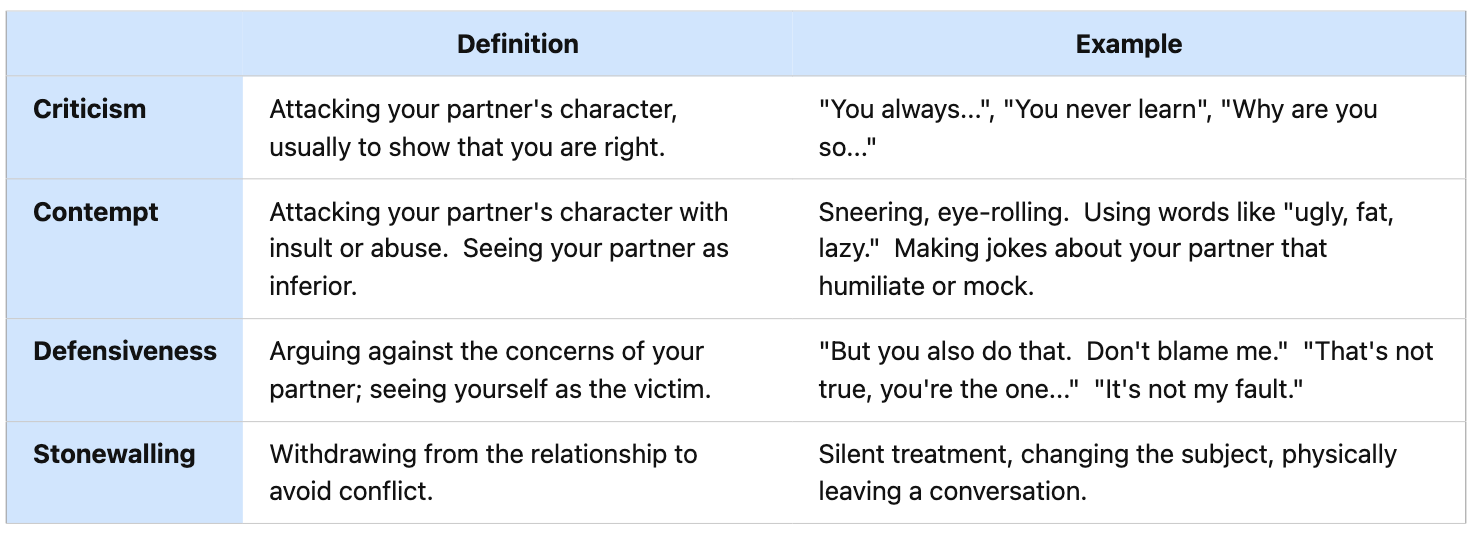Paper 2 - Interpersonal relationships
1/4
There's no tags or description
Looks like no tags are added yet.
Name | Mastery | Learn | Test | Matching | Spaced |
|---|
No study sessions yet.
5 Terms
Wedekind: MHC GENE
Biological theories of attraction
Background: The biological approach argues that human attraction has its roots in natural selection – that is, we are attracted to the traits that would have the greatest advantage for our potential offspring. Another aspect of natural selection would be to make sure that the immune system of any offspring would be as effective as possible. Research on the MHC – or Major Histocompatibility Complex – looks at the role of genes linked to the immune system in human attraction. MHC has an influence on human smell. Researchers are divided on whether MHC could be an example of a human pheromone. A female mouse chooses a mate whose major histocompatibility complex (MHC) genes are the least similar to her own. There is also some indication that human females also prefer men whose MHC genes are the least similar to their own. MHC genes are co-dominant, meaning that both sets of inherited genes have an effect on the child’s immune system; so the more diverse the MHC genes of the parents, the stronger the immune system of the offspring.

Markey and Markey (2007): SIMILARITY ATTRACTION MODEL
Cognitive theories of attraction
Background: Cognitive researchers argue that the extent to which people perceive another person as similar to themselves may be one explanation for attraction.The Similarity-Attraction Model argues that people like and are attracted to others who are similar, rather than dissimilar to themselves.
Context: Markey and Markey investigated the extent to which similarity is a factor in the way people choose a partner.
Procedure: Using questionnaires, the researchers asked a large self-selected sample of undergraduate students to describe the ideal psychological characteristics, values, and attitudes of their ideal romantic partner, without thinking of anyone in particular.
Afterward, they were asked to describe themselves.
Results: The results showed that the way the participants described themselves was similar to what they were seeking in their ideal partner.
Follow up study:
In a follow-up study, the researchers used 106 young couples who had been together for 1 year. The self-selected sample of participants was recruited through advertisements in the local newspaper. The participants filled out a questionnaire about their own as well as their partner’s personality characteristics.
Results: The result was in line with the first investigation. The study confirmed that people want partners who are similar to themselves. The second study also found that couples who experienced the most loving and harmonious relationships have romantic partners who are similar to themselves in some characteristics but not all. For example, if one partner tended to be somewhat dominant, the other was more submissive. This points towards the possibility that total similarity in a couple may be a wish but perhaps not ideal when it comes to maintaining harmony long-term.
Evaluation:
The study was based on self-report questionnaires which means that the responses may have been influenced by demand characteristics.
The sample consisted of young American students, so it is not possible to generalize to other populations.
However, the results are based on a relatively large sample, and this enhances the reliability of the study.
Bradbury and Fincham (1990):
Communication in relationships
Background: Communication plays an important role in all types of relationships. It influences what attracts us to someone and how we maintain a relationship; it is often cited as one of the key reasons that a relationship may change over time or even fall apart. Communication is not just what we say but how we say it.
Context: Bradbury and Fincham’s research focused on the role of communication in relationships.
Procedure: The participants were recruited through advertisements in the local media. Couples were considered only if they were married, living together, and had not been for marriage counselling. 47 couples participated. The average length of marriage was 8.5 years. All participants were asked to complete a survey to determine their level of marital satisfaction. Before the observation, the couple was asked to individually fill in a questionnaire to determine the greatest problems in their marriage. After the individual session, they were brought together and instructed to discuss a possible solution to the problem that they had both identified. It was discontinued after 15 minutes had elapsed. The observation was video recorded.Three trained researchers independently coded the videotape to identify relationship-enhancing and distress-maintaining communication patterns.
Results: Couples that reported lower levels of marital satisfaction had more frequent distress maintaining communication patterns—in other words, they were more likely to attribute marital problems to the partner and have a greater tendency toward seeing the partner behaving intentionally and with selfish motivation.
Evaluation:
As the results are only correlational, there is the problem of bidirectional ambiguity. We cannot know if distress-maintaining communication is the cause or the result of marital dissatisfaction.
The researchers used researcher triangulation in the coding of the observation, increasing the reliability of the data.
A sampling bias – all couples were from Western culture - may have affected the communication styles used in a marital relationship. The study used a cross-sectional design, so it is not possible to observe change over time.
Felmlee (1995): FATAL ATTRACTION THEORY
Why relationships end
Background:
Felmlee (1995) proposed her Fatal Attraction Theory in which she argues that what attracted us to our partner in the first place may end up being the reason that the relationship ends.
1. Fun to foolish. This was the most common fatal attraction process. In this case, the partner was initially seen to have an amazing sense of humor and fun to be with. He made you forget all of your cares and worries. But then over time, if this remains a predominant part of their behavior, it can be seen that the person lacks maturity or "can't take anything seriously." It may also be seen that humor is used to avoid solving problems in the relationship or, in the worst case, is used as a way to humiliate one's partner.
2. Strong to domineering. In this case, people are drawn to partners who show self-confidence and have strong opinions about life. They are seen as leaders and people who "know what they want in life." Later, however, the partner may be seen as uncompromising and authoritarian. In the worst cases, the partner may be abusive.
3. Spontaneous to unpredictable. This is when we are attracted to someone who lives in the moment. They are not bound by lots of plans and are able to go with the flow. There is excitement in their spontaneity and lack of predictability. Over time, this may be seen as a lack of seriousness. There may also be frustration as a result of a lack of planning. In the worst-case scenario, this leads to cheating on the spouse and a lack of commitment.
Procedure: Her sample was made up of 301 university students - both male and female - who were asked to think about their most recent romantic relationship that had ended. They were asked to list the qualities that had attracted them to their former partner. Then they were asked which qualities in their partner led to the breakup.
Results: She found that in 88/301 cases, what had been once seen as an attractive trait ended up being the reason for the split. She found three common fatal attraction patterns: Fun to foolish, Strong to domineering, and Spontaneous to unpredictable.
Evaluation:
Whenever participants are asked to remember something there is the possibility of memory distortion. The peak-end-rule may influence perception. This is where participants tend to remember examples of very bad events in their relationship, which is the peak, and then their most recent behaviour, which is the end and tends to be negative.
Since the data is self-reported, there is no way of verifying these events.
Cannot be generalised to people who seek a relationship in hopes of marriage as young people often engage in short term relationships.
Gottman (1994): 4 HORSEMEN OF THE APOCALYPSE
Communication in relationships
Why relationships end
Context: Psychologist John Gottman has proposed that there are four communication styles that threaten a relationship:
criticism
contempt
defensiveness
stonewalling
He calls these four communication styles the Four Horsemen of the Apocalypse. Gottman argues that it is not what we say, but how we say it. Our facial expressions communicate how we really feel about our partners.
Procedure: Gottman’s research has been carried out primarily by observing and interviewing couples in his laboratory. He observed couples having a low-conflict conversation and then a high-conflict conversation. He measured physiological factors like their heart rate, blood pressure, and skin galvanisation (a change in the electrical properties of the skin. Fear, anger, startle response, orienting response and sexual feelings are all among the emotions which may produce similar GSR responses). He argues that he can predict the likelihood that a marriage will survive by watching communication patterns between two people.
Results: According to Gottman, part of communication is our use of micro-expressions. For example, when we feel contempt or disgust for someone, our face shows it. However, according to his research, it is primarily our state of arousal that occurs during a conflict – when our heartbeat exceeds 100 beats per minute – and our oral communication which is predictive of a failing relationship.
Evaluation:
One of the problems with this research, however, is that when Gottman tells couples that they are expressing these emotions, it may lead to a self-fulfilling prophecy. This would compromise the predictive validity of his theory.
In addition, most of the couples that come to him for help are already in severe crisis. This may mean that the high predictive validity of his research has more to do with the fact that at least one of the partners may have already decided to end the relationship.
The study is retrospective in nature. In this case, couples are asked to talk about their relationship or marriage. Meaning we are open the possibility of memory distortion, such as the the peak-end rule, which may influence perception.
